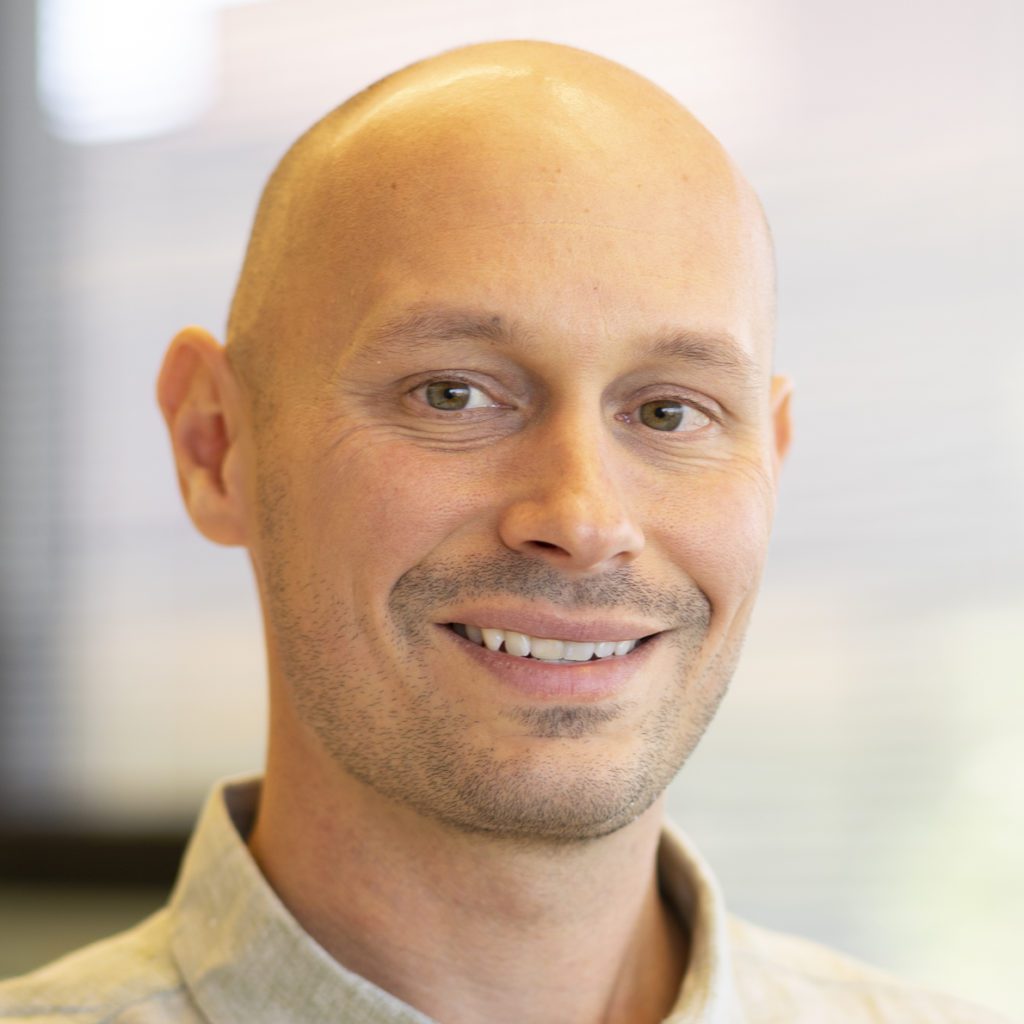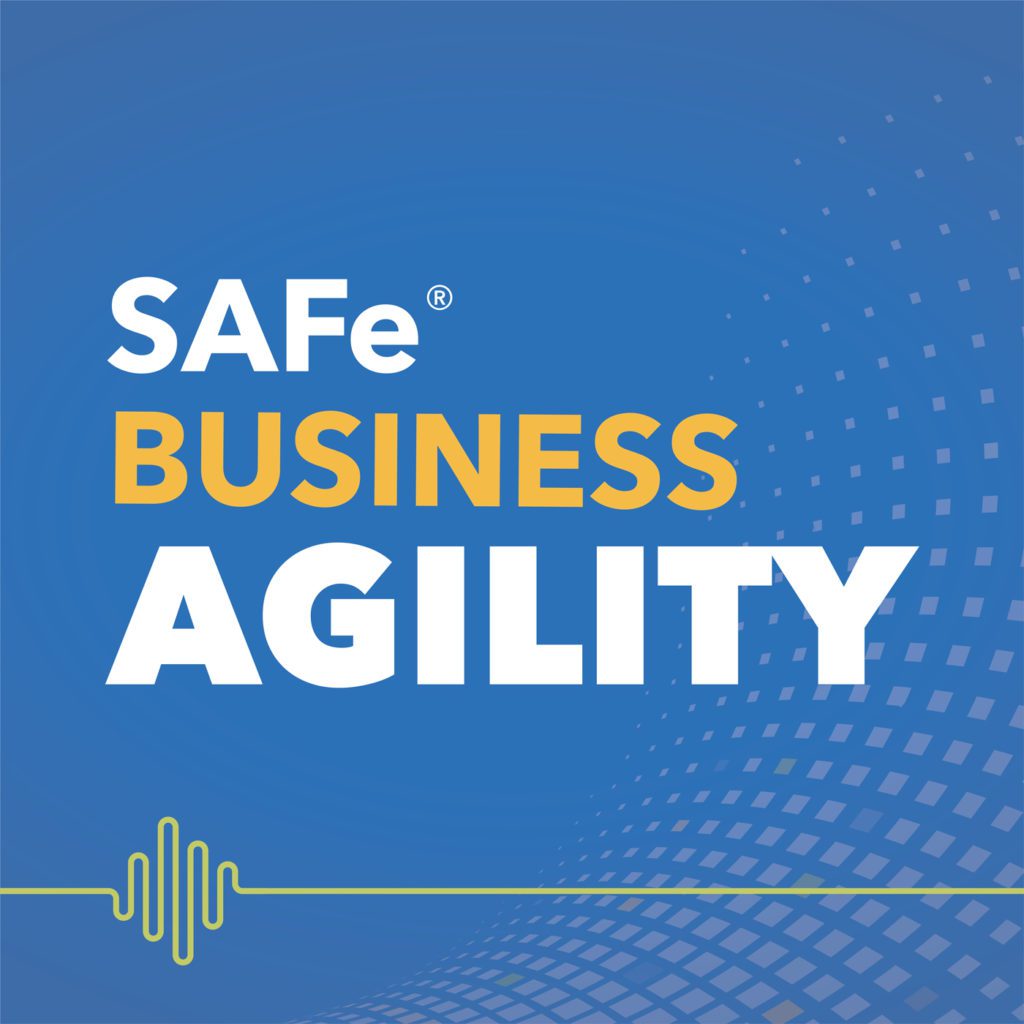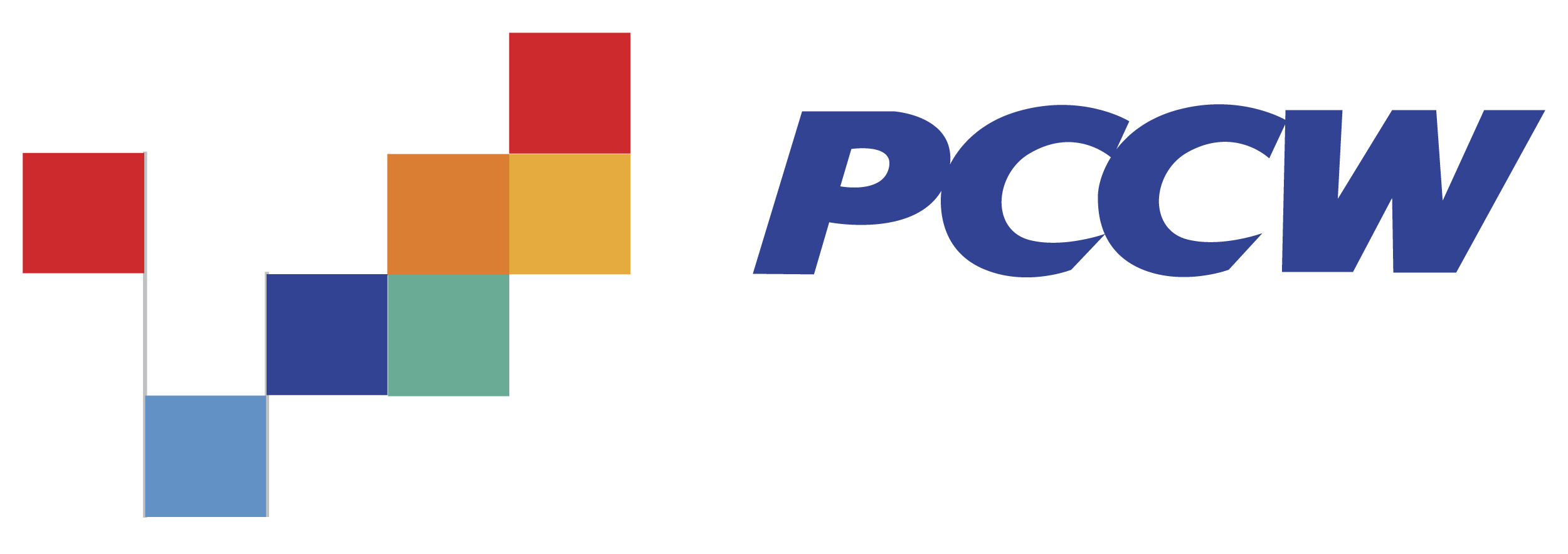
Defining and effectively managing value streams can translate to satisfied customers and competitive advantage in an organization. But what is value stream management and how does it relate to SAFe? In this episode, Richard Knaster and Marc Rix continue their conversation about why value stream management is important for effective business agility in an organization, and how it can help organizations succeed in the digital age.
Click the “Subscribe” button to subscribe to the SAFe Business Agility podcast on Apple Podcasts
Share:
Defining and effectively managing value streams can translate to satisfied customers and competitive advantage. But what is value stream management and how does it relate to SAFe? In this episode, Richard Knaster and Marc Rix continue their conversation about why value stream management is important, and how it can help organizations succeed in the digital age.
In part two of their deep-dive, Marc and Richard discuss elements including:
- What value stream management means in different contexts
- Value stream management in the real world: two stories from the field
Follow these links to learn more about topics mentioned in the podcast:
- Ebook: Value Stream Management for the Digital Age
- 15th Annual State of Agile Report
- Article: Value Stream Management in SAFe
- Blog post: 10 Tips for Value Stream Identification
Hosted by: Melissa Reeve

Melissa Reeve is the Vice President of Marketing at Scaled Agile, Inc. In this role, Melissa guides the marketing team, helping people better understand Scaled Agile, the Scaled Agile Framework (SAFe), and its mission. Connect with Melissa on LinkedIn.
Guest: Richard Knaster

Richard is a SAFe Fellow and vice president and chief scientist at Digital AI, as well as a former Scaled Agile employee and methodologist. He’s also the author of the SAFe Distilled book series and the ebook, Value Stream Management for the Digital Age. Richard has led large-scale Agile transformations for more than 15 years and is passionate about helping organizations create a better environment to deliver value. Connect with Richard on LinkedIn.
Guest: Marc Rix

A SAFe Fellow and principal consultant at Scaled Agile, Marc helps large enterprises leverage the game-changing power of Lean, Agile, and DevOps at scale. He has over 20 years of experience applying Lean-Agile methods to improve value streams in organizations of all sizes and industries. Marc is also an entrepreneur and internationally recognized thought leader, consultant, trainer, adviser, and speaker. Find Marc on LinkedIn.
Transcript
Speaker 1:
Looking for the latest news, experiences, and answers to questions about SAFe? You’ve come to the right place. This podcast is for you, the SAFe community of practitioners, trainers, users, and everyone who engages SAFe on a daily basis.
Melissa Reeve:
Welcome to the SAFe Business Agility podcast recorded from our homes around the world. I’m Melissa Reeve, your host for today’s episode.
Melissa Reeve:
This is part two of our series on value stream management featuring Richard Knaster and Marc Rix. Richard is a SAFe Fellow and vice president and chief scientist at Digital.ai, and Marc Rix is a SAFe Fellow and principal consultant here at Scaled Agile. Thanks for joining me for this second episode. It’s great to have you back on the show.
Marc Rix:
Thanks a lot, Melissa. I’m very excited to be here.
Richard Knaster:
Thank you, Melissa. It’s great to be here.
Melissa Reeve:
Let’s get started.
Melissa Reeve:
So, for our listeners, I want to break a few of these things down, because I feel like we’ve done a pretty good job identifying in an overarching way what a value stream is, right? It’s the people, the processes, the information, and the tools that are essential to creating and delivering value. And that’s kind of the macro concept. Then we also talked about value stream identification. So what are the products and the services? What is that value that you’re delivering to the customer? We also talked about mapping your value streams. So what are those steps that you need to do to deliver value to the customer? How can you Lean out those steps so that you can identify the waste and make sure that you’ve got the flow flowing through your value streams? And then, we’ve now talked about value stream management, which is that monitoring and the traceability all around these value streams that you’ve identified. And that’s my understanding based on our conversation today. Richard, did I get that right?
Richard Knaster:
I’m talking about the optimization of people, processes, and technology to optimize the flow of value from concept all the way through cash, or from idea to production. And there are a bunch of different processes I’m thinking that are involved in each of those three areas. So very similar to what Marc was mentioning. And this is very nascent, so there are definitely competing definitions of what value stream management means.
Melissa Reeve:
And that’s what I’m sensing here is that it is relatively new and yet it’s a big buzzword. So, I think for our listeners, it’s helpful to hear these different points of view about what VSM or value stream management means to different folks.
Richard Knaster:
Yeah. And the problem too is that the acronym VSM, does that mean value stream management? Or does that mean value stream mapping? So that often gets us into quite a bit of trouble as well.
Melissa Reeve:
I can see that. So Richard, what does all this look like in the real world? Can you share an experience you’ve had in the field helping an organization transition to value streams and value stream management?
Richard Knaster:
Yeah. So, I’m going to talk about a case in the federal government, because if you can do value stream management in the federal government, then you can do it anywhere. When we started with this agency, they were still managing work in projects. And they had many different groups in that organization, and they were separately funded. And one of the first things that we had to do was to bring the funding together for that agency. And that agency included a lot of subgroups or departments or divisions within that agency. So, the first thing we had to get alignment on was that we were going to change the way we work and that we were going to be implementing value stream management. And then to start thinking, in what I call it, a one-portfolio mindset. Because everyone was doing these separate projects and often there was redundancy between one division and another division of that same agency. And we only have one pot of money to spend. So it’s not like we can get more money if we need it.
So, we really had to then start … So, we started at the portfolio with this particular agency because we felt it was important to get alignment on, what is the really important thing that we wanted this agency to work on? What are going to be the large epics that they’re working on? And then for us, it was pretty easy to identify the value streams there because the different divisions of that agency just happened to fall into place; they were essentially the value streams that this agency provided. So the areas were the services that that agency provided. So, we were able to do that.
And so, I’m finding more and more that I’m starting with Lean Portfolio Management when it comes to implementing value streams, because of having to go from projects to value streams and changing the funding mechanisms, as well as getting alignment about the large initiatives that those value streams are going to implement, and then ensuring that we’re organized for value. So, doing the identification and the mapping.
Melissa Reeve:
Yeah. I can see how starting with LPM and getting your funding mechanisms organized around value streams helps then once you identify your value streams and you start to move forward with them. So thanks for sharing that example.
Richard Knaster:
Sure.
Melissa Reeve:
So Marc, how about you? Do you have a real-world example that you can share with our listeners?
Marc Rix:
Sure. Richard’s story actually triggers an experience I had with a government contractor a couple of years ago. Had a really breakthrough moment that will probably stick with me for the rest of my career. But it was very directly related to Value Stream Management and organizing around value and DevOps and value stream mapping. This was a great moment.
So, I was actually teaching the SAFe® DevOps class to a full Agile Release Train, which I’ve had the opportunity to do a few times, but certainly not enough times. It’s always great when you can get an entire Agile Release Train, all of the teams, all of the business owners, and even people from other walks of life who were adjacent to the ARTs, all in a room together learning and talking about value streams.
So, as you may know, there’s a significant amount of value stream mapping we do in the SAFe® DevOps course, which brought everybody kind of onto the same page about what the value streams are. What we quickly realized in the process was that every one of the teams in the room had a different idea of what the value stream actually was. After everybody did their thing and mapped what they thought the value stream was, we had to kind of pause and reflect on what was happening in the room. And what we did on the fly was re-engineer the course to do more of a deep dive into value stream identification and value stream mapping, making sure that we could get all of the teams and everybody on the ART aligned on what the true value stream was.
So we sort of reconfigured the class and reconfigured our objectives and brought the teams together to really think through what the actual value stream was. And that took the dynamic of the course from a team-by-team perspective and split out into teams and do independent work into more of a collective, full-group activity on identifying value streams. This got everybody on the ART involved in identifying the value stream and then mapping it together.
So to kind of shorten the story, where we ended the day was with a renewed understanding of the actual current state value stream in this organization. So now everybody had alignment where there wasn’t alignment before on the actual value stream, because, as we probably know, a lot of times there’s a documented process that’s actually not followed by anybody. This brought everybody onto the same page about the actual delivery process. And then got them aligned on what the value stream should be. So, we did some future-state design work on the value stream and identified the major bottlenecks and what needed to change to increase flow and improve the value stream for this organization with everybody who needed to be involved in the room that day. So it was a big breakthrough moment.
And I’ve had moments like this in other cases too, with other clients and other verticals, other industries either at this larger scale or smaller scale. But I think the lesson to be learned here through all of these experiences I’ve had in the field with doing some form of Value Stream Management or mapping or identification, is great things happen when people take a systems point of view and come together to talk about the entire process end-to-end, not just a segment of it.
So, when you can get stakeholders and practitioners and leaders and sponsors from across the organization talking about a customer-centric point of view of the value stream, not just how we move work from department to department, but what we do to deliver value to our end customers and businesses, great things start to happen. Great conversations start to be sparked. And the team swarms together. And the organization swarms together on redefining those value streams where they need to, sometimes even reorganizing on the fly around that value and creating a situation where they’re now prepared to execute their value streams in a way that their businesses need them to execute their value streams.
Melissa Reeve:
Yeah. I really appreciate that example, Marc, because I think there are times when value streams may be obvious. And then there are these other moments where the value streams aren’t as obvious and it requires some discussion, some internal alignment. And I thank you both for talking about value stream management with me today and how it can be such a game-changer for organizations and their digital transformations.
Thanks for being on the show today.
Richard Knaster:
Thanks for having us, Melissa.
Marc Rix:
This is definitely one of my favorite subjects, so thank you, Melissa, for having me.
Melissa Reeve:
And thanks for listening to our show today. Be sure to check out the show notes and more at scaledagile.com/podcast. Revisit past topics at scaledagile.com/podcast.
Speaker 1:
Relentless improvement is in our DNA and we welcome your input on how we can improve the show. Drop us a line at podcast@scaledagile.com.











